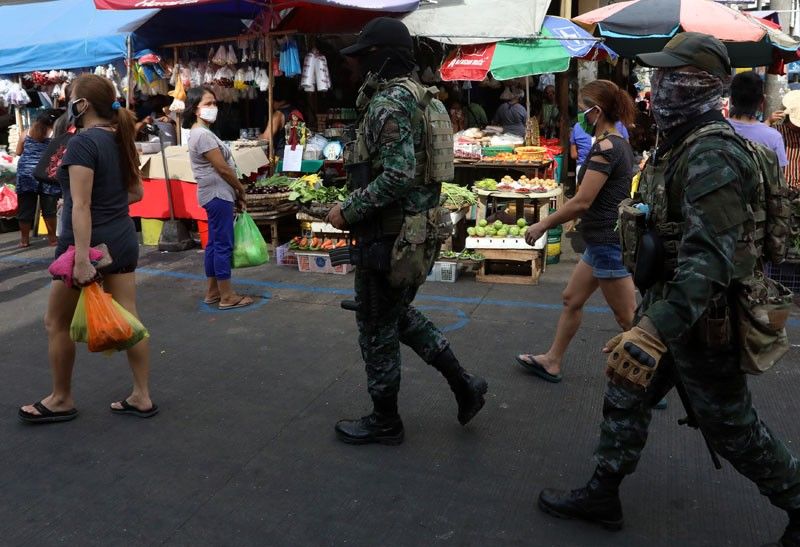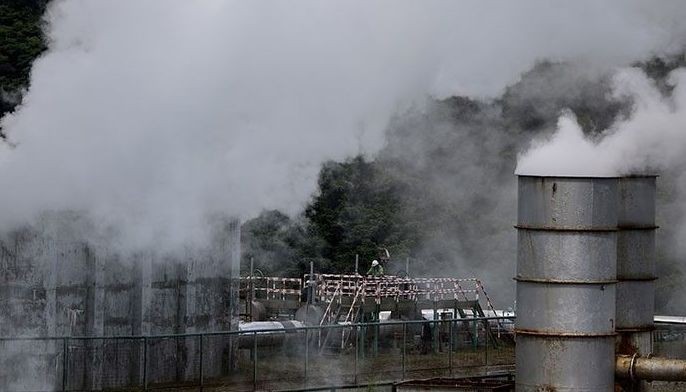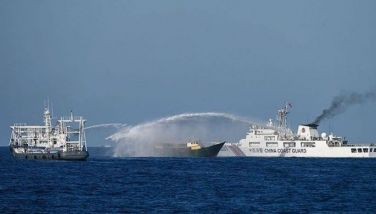High-risk COVID-19 areas face ECQ extension

MANILA, Philippines — Only in areas with “high risk” of coronavirus disease 2019 (COVID-19) spread will the enhanced community quarantine (ECQ) continue after its lifting on April 30 – at least based on the recommendation to President Duterte of a special government task force dealing with the health crisis.
Presidential spokesman Harry Roque did not elaborate on the recommendation but disclosed details of a framework for guiding any decision on the quarantine, proposed by the Inter-Agency Task Force (IATF) on the Management of Emerging Infectious Diseases.
“They have submitted the recommendations, it’s with the President,” Roque said at a press briefing yesterday.
“While he wants to lift the ECQ, the data states that the health sector cannot handle it. The President will make the difficult but right decision,” he added.
Roque said Duterte would be “very conservative” in whatever decision he makes on the fate of the Luzon community quarantine.
“We will become very conservative perhaps... we all know you are very eager (to get out of your houses). But we know that there are areas with high cases and our hospitals may not be ready to provide services. The ECQ may not be lifted (in these areas),” he said.
Asked what he meant by conservative, Roque paraphrased San Miguel Corp. president Ramon Ang’s statement that “money can be earned but one cannot bring back a life that is lost.”
Roque said those “especially vulnerable” to the disease, including the elderly or those with existing health problems, may still be required to stay home even if the Luzon-wide quarantine is relaxed.
Duterte was expected to meet with members of the IATF last night to discuss the quarantine in Luzon, which started last March 17. It was supposed to end last April 13 but the President extended it until April 30 to give the government more time to conduct tests and to study the virus.
Under the framework of the IATF, the quarantine should be lifted in “low risk” areas while a modified quarantine would be implemented in places deemed at moderate risk.
Public transportation would be restored in low risk areas while a reduced passenger capacity would be required under a modified quarantine.
For high risk areas, including those with COVID-19 outbreaks, the quarantine would be extended. There will be no relaxation of quarantine protocols in high risk areas.
For places under modified quarantine, restrictions based on health and age may be imposed, including senior citizens or those who are 60 years old and above, zero to 20 years old, those who are 21 to 59 years old with co-morbidity or existing health problems, living with senior citizen and living with anyone with co-morbidity.
NCR at high risk
Roque declined to say which areas would remain under quarantine after April 30, saying he cannot preempt the announcement of Duterte.
He, however, cited a study from the University of the Philippines, which labeled Metro Manila, CALABARZON, parts of Bulacan, Cebu City and Davao City as having geographical risk.
Roque said Duterte, in his decision, would consider whether the country has already established minimum health standards or whether the health system has the capacity to accommodate more people who might get sick.
“If there is relaxation or lifting of ECQ, the capability of our health sector to give medical attention to everyone who might be infected with COVID-19 should be sufficient,” the Palace spokesman said.
“We have to check if we have the needed bed capacity for those who might get sick. In terms of hospital capacity, it has to be considered by decision-makers,” he added.
For areas where doubling time of case is more than 30 days, the quarantine may be relaxed if the critical care utilization rate is less than 30 percent, which means that the health system is not likely to be overwhelmed.
If the critical care utilization rate is 30 to 70 percent, a modified quarantine may be imposed but for those with more than 70 percent, the enhanced community quarantine would be prolonged.
For local governments with case doubling rate of seven to 30 days, a modified quarantine may be implemented if their critical utilization rate is up to 70 percent. The quarantine may be extended if the critical care utilization rate is more than 70 percent.
For places with case doubling time of less than seven days, the quarantine may be prolonged regardless of the critical utilization rate.
Roque reiterated that the President’s decision would be based on science and would balance the need to contain the disease and protect the livelihood of workers.
Health standards
Meanwhile, the Department of Trade and Industry (DTI), Department of Health (DOH) and Department of Labor and Employment (DOLE) are coming up with minimum health standards to be observed by businesses once they are allowed to resume operations after the lifting of the ECQ.
In a statement, DTI said it is working with the DOH and DOLE for the issuance of new guidelines for minimum health protocols in all business operations.
Trade Secretary Ramon Lopez said best hygiene and health measures practiced by leading export companies should be the new protocol for business operations in a post-ECQ scenario.
“Minimum health standards such as strict social distancing, wearing of face masks, presence of sanitation stations, taking of body temperature and provision of vitamins must always be observed in work and public places,” he said.
“Likewise, the conduct of COVID-19 tests, provision of nearby accommodations and shuttle services, allowing more work-from-home arrangements and healthcare preparedness and insurance from enterprises should be the new normal as we ease into the new way of doing business,” he added.
“We need to have a new way of doing business to ensure that our significant gains during the enhanced community quarantine and the collective efforts in flattening the curve will not be put to waste once enhanced community quarantine is fully lifted,” he said.
“It is accepted that health takes primacy over the economy, but there is no dichotomy between the two if we take precautionary health measures when we do business and work with other people to minimize any health risk in a post-enhanced community quarantine environment,” he pointed out.
Leading export-oriented manufacturing industries in the country allowed to continue operations during the Luzon-wide lockdown have implemented measures such as providing near-site accommodation and shuttle services, hiring from local communities, provision of vitamins and medicines and regular check-ups and health care in the workplace.
Even after the lifting of the ECQ, firms must continue implementing work-from-home arrangements as much as possible to reduce the spread of COVID-19.
“As we continue to collaborate with different industries, we call on the cooperation of all our partners in the private sector to maintain best practices through observing health protocols and sustaining measures for employees’ welfare. Only then can we heal as one and move forward as one,” he said.
- Latest
- Trending



























